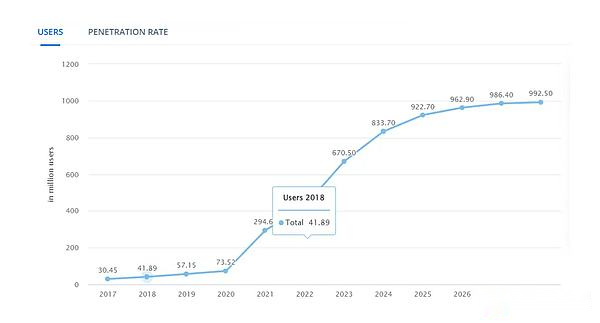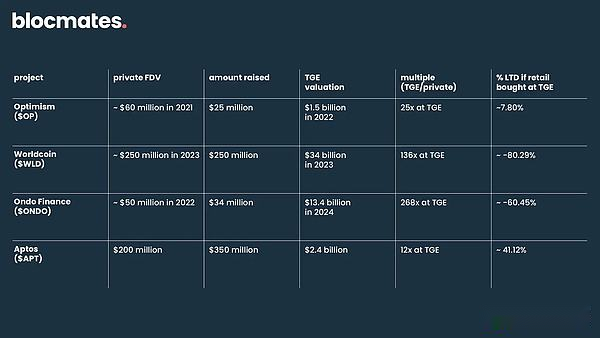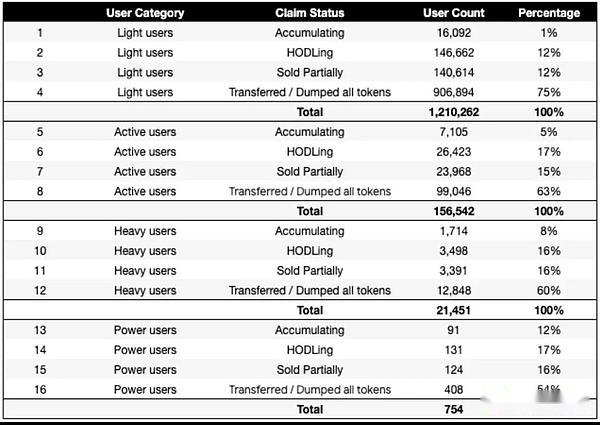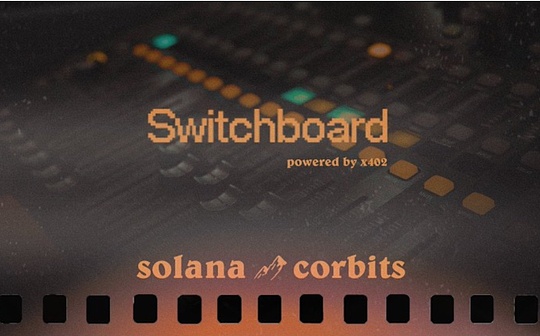
Author: blocmates; Source: X,@blocmates;Compiled by: Luffy
If you have been active in the cryptocurrency market recently, it is not difficult to find a trend: the airdrop craze is gradually fading, initial coin offerings (ICOs) are making a strong return, and the market is transforming from a venture capital-led financing model to a decentralized fundraising model.
ICO is not a new thing. Some of the most popular currencies in the cryptocurrency field (such as Ethereum, Augur) have completed their initial issuance through ICO.However, we must admit that after a long “quiet period” from 2022 to 2024 (during which project financing was mostly completed through closed-door venture capital transactions), ICO will usher in a strong recovery in 2025.
Why are ICOs making a comeback?
One argument that supports the renewed popularity of ICO-style financing is that since the first ICO boom in 2014-2018, the number of cryptocurrency participants has more than tripled, with a compound annual growth rate of 4.46%, and the professionalism of the average participant has increased significantly.Coupled with the increase in stablecoin supply, it naturally expands the available capital pool and makes more people willing to buy discounted tokens before the token generation event (TGE).

Although this argument is attractive, the increase in market participants is not the main driver of the return of the ICO mechanism.To get to the core reasons for the recovery, we need to look at the inherent flaws in the current financing model.
A closer look at the market cycle from 2022 to 2024 will reveal that many projects raised funds from venture capital funds at low fully diluted valuations (FDV), but by depressing the initial circulation, the tokens reached a much higher FDV when publicly listed than at the time of financing.
Here are some examples from 2022-2024:

As the table shows, insiders captured most of the gains, and the profit margins for retail investors were severely compressed.
Generally speaking, the profit opportunities of altcoins are mainly concentrated in the hands of insiders. Retail investors either buy tokens at inflated prices or sell them quickly after receiving airdrops.This is largely because airdrops are often viewed as “free money,” triggering immediate selling pressure.
This pattern has led to widespread fatigue among retail participants: they are gradually losing confidence in traditional altcoin investments as the risk-reward ratio continues to deteriorate.
Subsequently, retail investors turned to memecoin. This type of asset has low entry barriers, high volatility and no venture capital participation, which promoted the memecoin craze and the rapid rise of memecoin issuance platforms.
Ultimately, this resulted in an increasingly serious misalignment of interests between retail investors, project teams and venture capital, and the incentive goals of the three parties became increasingly divergent:
-
Retail investors crave fairer access opportunities
-
Project parties need sustainable communities rather than short-term speculation
-
Venture capital often pursues early-stage asymmetric returns
The resulting tension has left the market in urgent need of a new model to recalibrate the incentive culture of the entire ecosystem, and the resurgence of ICO-style financing is a reflection of this shift.
The appeal of ICOs lies not only in providing an alternative financing method, but also in its clearer incentive structure, which allows retail investors to participate on fairer terms.
Reasons why ICO may replace airdrops
Based on the above reasons, we have reason to believe that the market incentive culture may shift to the “interest binding” model, using ICO discounts to replace the traditional “task for rewards” airdrop model.
Signs are starting to emerge.Both MegaETH and Monad are using portions of previous venture capital investments for public sales.While these initiatives are not pure ICO offerings, releasing tokens to the public at venture capital round valuations is a step in the right direction.
ICO is generally regarded as a more natural way of distributing tokens that emphasizes “interest binding”: participants invest their own funds at a baseline valuation, which can be either a single round of financing or a laddered structure with multiple pricing levels.
In theory, this can create a stronger psychological and economic bond between users and projects.
Since participants buy the tokens outright rather than getting them for free, they are generally more inclined to hold on to them for the long term.This helps reverse the ongoing trend of shorter on-chain asset holding times in recent cycles.
In addition, ICO is expected to reshape the income space of the altcoin market: public fundraising is usually more transparent, circulation and valuation are clear at a glance, and its FDV is often more reasonable than venture capital-led token models.
This structure increases the likelihood of early retail participants reaping significant gains, rather than competing with insider allocations that receive deep discounts.
In contrast, many airdrop projects have given rise to a widespread “sell as soon as you receive” culture due to poor incentive design.ICO provides a more rational and sustainable choice in terms of token distribution and early community building.
The rise of early-stage financing platforms has implications for ICOs
Last month, the cryptocurrency industry saw a massive acquisition: Coinbase acquired on-chain financing platform Echo for $375 million.The acquisition includes Echo’s Sonar product — a tool that allows anyone to launch a public token sale.
At the same time, Coinbase also launched a native in-app launch platform, with the first collaborative project being Monad.
In addition to Echo and Coinbase, early stage financing platforms have shown trend development.Kaito launched its exclusive launch platform MetaDAO, redefining the connotation of ICO.
MetaDAO deserves special attention.The emergence of this platform clearly reflects the market’s weariness with the “insider-led, high FDV issuance” model.The goal is to help projects achieve long-term growth through early launch through high-circulation ICOs.
This shows that the market is fully ready for the return of ICO, but it is not any form of ICO, but a carefully planned and well-executed fundraising model that allows the team, community and the overall market to achieve a healthy binding of interests.
How to make a good layout?
To be fair, we have previously pointed out that the resurgence in ICO popularity reflects the market’s rethinking of incentive culture, which at its core is about creating fairer opportunities for retail investors.
This means that project parties and retail investors need to align their interests and cultivate a more resilient community composed of active users and committed token holders.Actually,This also indicates that the era of “free tokens” may be coming to an end.
Looking back at some successful airdrops that have had a profound impact on the ecosystem (such as HYPE), we can see that there is room for optimization of distribution design:
Taking Hyperliquid as an example, real users (not speculative “miners”) participate by paying fees and taking actual risks, and the rewards they receive are truly tied to the success of the product.
This case shows that when the incentive structure is well designed, retail participation can be both meaningful and sustainable, rather than a short-lived speculative behavior.
We believe that this kind of thinking will penetrate into the operating model of ICO: in the future, ICO may provide discounts to users with “more mature on-chain behavior and higher credibility”, thereby replacing traditional airdrop distribution.
A set of data in 2024 is quite telling: after airdropping tokens, more than 80% of light users tend to sell within 7 days, while the proportion of heavy users is only 55%.

To succeed in the envisioned future, participants need to adopt a long-term mindset and adjust their actions accordingly.
This means cultivating user loyalty to specific wallet addresses to build credibility and demonstrate consistent, coordinated on-chain behavior.
This behavior may include meaningful on-chain activities such as experimenting with various protocols, deploying liquidity in capital pools, contributing to public goods such as Gitcoin, etc.
While the market’s evaluation of projects like Kaito remains divided, we expect them to play an important role in shaping the next phase of the market.
For example, yap thresholds combined with verified on-chain behavior could become key criteria for ICO participation eligibility or discounted token distribution, rewarding those participants who demonstrate continued commitment and interest binding.
If the above model becomes the norm, one way to expand returns is to allocate funds across multiple ecosystems using products such as INFINIT or Giza.
Although the effect of this method may be limited in scenarios where the weight of wallet age and historical behavior is high, its advantages will still be significant if only on-chain activity is used as a criterion for ICO participation or discount allocation.
Potential issues and challenges
ICOs still face many challenges before they become the default method of financing and reward distribution in the cryptocurrency industry.
A key challenge is that, as with VC-led financing, poorly designed ICO token economic models can lead to failure.
If a project prices its tokens too high, especially relative to current market valuations (which tend to be affected by low float and high FDV manipulation), then those tokens may still struggle to gain acceptance on the open market.
Additionally, regulatory and legal considerations pose significant obstacles.Despite increasing regulatory transparency for cryptocurrencies in some jurisdictions, there are still many gray areas surrounding ICOs in potentially high-capital areas.
These legal uncertainties can become bottlenecks to the success of ICOs and, in some cases, may even push projects that struggle to gain enough attention back to venture capital institutions.
Another interesting challenge facing ICOs is the potential for market saturation.Since multiple projects are often raising funds at the same time, participants’ attention is divided and overall enthusiasm for ICOs may decline.This could lead to widespread “ICO fatigue,” inhibiting widespread participation and market momentum.
In addition to these challenges, as the market may shift toward ICOs, projects have many other key considerations, including incentive alignment, community engagement, and infrastructure risks, all of which must be addressed to ensure sustainable success.
Conclusion
At present, the market’s demands are very clear: people are eager for fairer project issuance and fewer venture capital scams.The current situation in the altcoin market reflects this – spot positions are decreasing and perpetual contracts trading volume is increasing.
We believe this is a clear indication that retail investors have largely given up on long-term gains in favor of more speculative investments.
From the perspective of attention economics, the situation is even more serious: it not only harms the entire industry, but also hinders innovation.
The return of ICOs appears to be a step in the right direction.But it is unlikely to completely replace airdrops as we know them, and is more likely to become a driving force that spawns a hybrid model in which long-term interest binding will become the core of any project’s market strategy.





